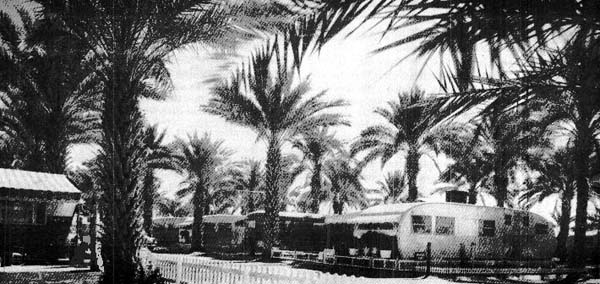
Trailer park in southern US. Consumer Reports, 1956.
A Literary Digest article from 1936 describes early trailers as "...remarkably compact trailers available for $300 and $400. These boast kitchenettes, combined living and sleeping quarters, hot and cold running water, toilet facilities and refrigeration."28 Much like today's recreational vehicles, these trailers had no walls to create separate rooms. Later and larger models would become more like a conventional house, with the inclusion of sliding panels for privacy, attachments for municipal or well water service (rather than water tanks) and flush commodes.

World War II brought on great shifts in the population and a rush of migration for defense jobs and other war-related activities. This rapid and vast movement of people created housing shortages and the trailer industry was called upon to fill the need. Soon many defense plants and army posts were surrounded by seas of trailers.
The population movements caused by the needs of the defense industries also effected growth in such places as municipal trailer parks which had formerly been the almost exclusive domain of the recreational trailer owner. These camps were soon filled with relatively permanent trailers inhabited by defense workers and military personnel. Growth also occurred along undeveloped roadways, especially those just on the peripheries of cities.